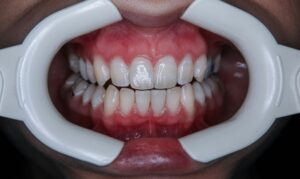As we grow older, many of us wonder whether it’s possible to increase our height, especially once we reach our 30s and beyond. Height is primarily determined by genetics and growth during childhood and adolescence. By the time we hit adulthood, most of our bones have stopped growing, leading to the common belief that height remains fixed after our teenage years. But is it really impossible to grow taller after 30? In this article, we’ll dive into the factors that determine height, the potential for increasing height in adulthood, and what can be done to maximize your stature even after reaching 30.
How Height Is Determined
The Role of Genetics in Height
Genetics play the most significant role in determining a person’s height. Studies suggest that 60-80% of your height is influenced by the genes inherited from your parents. This genetic blueprint dictates the growth of your bones, particularly the long bones in your legs, which contribute most to your height. Family history can be a reliable indicator of potential height, but it’s not the sole factor.
The Growth Plates and Puberty
During childhood and adolescence, bones grow in length due to the presence of growth plates at the ends of long bones. These growth plates are areas of cartilage that allow bones to lengthen as a person matures. However, once puberty is complete, typically by the late teens or early 20s, these growth plates harden and close, preventing further growth in bone length. This natural closure marks the end of the height increase phase for most individuals.
The Impact of Nutrition and Lifestyle
While genetics are a primary factor, nutrition and overall health during childhood and adolescence also play crucial roles. Proper nutrition, sufficient sleep, regular physical activity, and hormone levels (such as growth hormone and thyroid hormone) all contribute to achieving your maximum genetic height potential. For example, a diet rich in calcium, vitamin D, and proteins is essential for healthy bone development and can help you reach your optimal height.
Can You Increase Your Height After 30?
The Reality of Bone Growth After 30
By the time you reach 30, your growth plates have long closed, meaning that the bones themselves can no longer grow in length. This makes it nearly impossible to naturally increase your height through bone elongation. However, there are still some factors that can influence how tall you appear and how you carry your height.
Spinal Decompression and Posture
One of the key areas where adults can experience changes in their height is in the spine. The human spine is composed of 33 vertebrae, separated by intervertebral discs. These discs are made up of a soft, gel-like material that cushions the vertebrae and allows for flexibility. Throughout the day, these discs can become compressed due to gravity, poor posture, and the natural aging process, leading to a slight reduction in height. However, improving posture and performing exercises that decompress the spine can help regain this lost height and potentially add a few centimeters to your stature.
Activities like yoga, Pilates, and specific stretching exercises can enhance spinal flexibility, strengthen the core muscles, and encourage better posture, giving you a taller appearance. Consider adding these practices to your routine to help maintain and potentially enhance your stature.
Exercises That May Help You Appear Taller
While you can’t grow taller by lengthening your bones, certain exercises can enhance your posture, stretch your muscles, and improve the alignment of your spine. These exercises include:
- Hanging Exercises: Hanging from a bar allows gravity to gently pull and stretch your spine, helping decompress the vertebrae. Aim for a few minutes each day to see gradual improvements.
- Cobra Stretch: This yoga pose involves lying face-down and arching your upper body backward, stretching the spine and strengthening the lower back. Incorporate it into your post-workout routine.
- Bridge Exercise: This involves lying on your back with your knees bent and lifting your hips, which helps stretch the spine and improves posture. Perform several sets for added benefit.
- Cat-Cow Stretch: This is another yoga pose that involves alternating between arching and rounding the back, promoting flexibility in the spine. Use it as a morning routine to start your day with improved posture.
The Role of Nutrition and Supplements
While you won’t see dramatic height changes from diet alone, maintaining proper nutrition is still important, especially for overall bone health. Ensuring adequate calcium, vitamin D, and protein intake can support healthy bones and prevent issues like osteoporosis, which can cause a reduction in height later in life.
Some people turn to supplements like growth hormone enhancers or height-increasing pills, but there’s little scientific evidence to support their effectiveness in increasing height in adults. Growth hormone treatments are typically only effective during childhood and adolescence when the growth plates are still open. Always consult with a healthcare professional before starting any supplement regimen.
Surgical Options for Height Increase
Limb-Lengthening Surgery
For those determined to increase their height, limb-lengthening surgery is an option, though it’s a highly invasive and costly procedure. In this surgery, the bones in the legs are surgically broken and then gradually lengthened over several months using adjustable rods. While the procedure can add several inches to a person’s height, it comes with significant risks, including infection, nerve damage, and long recovery times.
This surgery is generally not recommended unless height significantly impacts a person’s mental health or quality of life, and it should only be considered after careful consultation with medical professionals. It’s crucial to weigh the potential benefits against the risks and the long-term commitment required for recovery.
Maintaining Height as You Age
Preventing Height Loss in Older Age
While growing taller after 30 is unlikely, maintaining your current height and preventing height loss as you age is achievable. Many people begin to lose height as they get older due to spinal disc degeneration, poor posture, and bone density loss. Here are some tips to maintain your height:
- Strengthen Core and Back Muscles: Strong core and back muscles support your spine and help maintain good posture, which can prevent slouching and compression.
- Stay Active: Regular physical activity, including weight-bearing exercises, helps maintain bone density and muscle strength.
- Ensure Proper Nutrition: Consuming sufficient amounts of calcium, vitamin D, and other essential nutrients supports bone health and can prevent osteoporosis, a common cause of height loss in older adults.
- Maintain Good Posture: Being mindful of your posture when sitting, standing, and walking helps you stand tall and avoid gradual height loss.
Avoiding Habits That Contribute to Height Loss
Certain habits can contribute to spinal compression and height loss, including:
- Sedentary Lifestyle: Prolonged sitting and lack of movement can lead to poor posture and weakened muscles, contributing to height loss over time. Make a conscious effort to stand and move throughout your day.
- Poor Sleep Position: Sleeping in positions that put strain on your back or neck can lead to long-term postural issues. Consider using supportive pillows and a mattress that promotes spinal alignment.
- Carrying Heavy Loads: Consistently carrying heavy backpacks or bags can compress the spine and lead to a hunched posture. Use both shoulder straps on backpacks and distribute weight evenly.
Understanding the Psychological Impact of Height
Our perceptions of height can have significant psychological implications. Society often associates height with confidence, authority, and attractiveness. This can lead to a self-fulfilling prophecy where individuals feel less capable or confident due to their stature. However, it’s essential to recognize that self-worth is not dictated by height. Emphasizing personal strengths and achievements can help mitigate the psychological impacts of perceived height deficiencies.
Embracing Your Stature
Ultimately, while height is largely determined by genetics and early growth, how you carry yourself, your posture, and maintaining a healthy lifestyle play significant roles in how tall you appear. Embracing these factors can help you stand tall and feel confident, regardless of your height. By focusing on factors you can control, such as posture, nutrition, and physical fitness, you can optimize your stature and live a healthy, fulfilling life.




